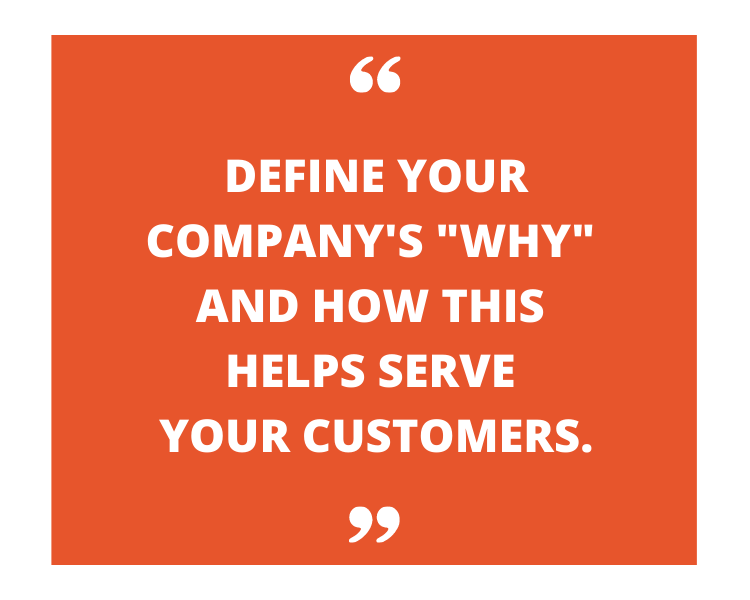A Good Digital Strategy: What Food Tech Brands and Suppliers Need to Create One
Let’s go on a trip. In this case, we’re going to see what it takes to create a good digital strategy.
If you had a choice to go anywhere right now, where would you go? Bali? The Bahamas? Maybe Barcelona?
Imagine what it looks like once you arrive. You’re surrounded by new sights, sounds, and smells. You can almost feel the warm sun across your face.
Ready to go?
Well, before hopping on the plane, you’ve got to prepare — unless you’re really into spontaneity.
Creating a good digital strategy works the same way. You need to know what the destination is and plan out what you need to get there.
It’s even more important, almost mandatory, for B2B companies to plan out their digital strategies, so they’re personalized for the buyer. 82% of B2B buyers expect to have the same experience making business purchases as they do when buying for themselves.
And only 27% of B2B businesses actually meet this demand.
Which means there’s an opportunity for you to step in and fill this void.
And it starts by mapping out a well-defined digital strategy framework and making sure you’ve packed what you need to make it there. I’ll go through the elements you need to create a customer-focused strategy that will guide your marketing efforts moving forward.
A Good Digital Strategy has a Destination
Before you start planning, you need to know where you’re headed. And to figure out the final destination for your digital strategy, there are a few questions you need to answer.
What’s your company’s mission?
Before setting off on any journey, you have to understand what the motivation was behind setting off in the first place. Define your company’s “why” and how this helps serve your customers.
Who is your audience?
Understanding your audience involves more than defining a demographic. It means digging deep to have a clear idea of what motivates them.
What challenges are they facing?
Whether your audience is looking for a new product solution or a way to run their business more efficiently, you have to have a firm grasp of the issue(s) keeping them up at night.
How are you serving them?
You’ll have to figure out exactly how your products help customers meet and overcome their specific challenges.
What products/services set you apart to better serve the audience?
Every business needs to spell out its USP. What is it that truly sets your company apart from all of the other ingredient suppliers or food tech companies out there?
Which tactics will you use to create a good digital strategy?
Your customers want personalization. So your tactics won’t appeal to a universal audience. Meet them where they are in their buying journey.
The answers to these questions give you a clearer view of what the result should look like and which metrics are needed to measure its success.
Your Digital Strategy Bag Needs a Good Persona
Now it’s time to pack what you need to get to your strategic destination. So let’s start by breaking down the elements of creating a persona.
Personas represent your ideal customer. They guide your messaging, so it’s clear that your marketing pieces speak directly to the person on the receiving end.
More importantly, they help you maintain consistency in how you’re communicating with them.
The more detailed the persona is, the better. Personas can have many attributes, but some of the most common include:
- Name
- Age
- Job Title
- Challenges/Goals
- Hobbies/Interests
- Priorities
You don’t have to stop there, though. Whenever possible, you need to create your personas based on hard data. And here are a few ways to get this information:
- Talking to your existing customers
- Set up a poll to ask specific questions about buying habits, business needs, etc.
- Interview potential customers by asking questions on social media
By putting a “face” with a name, these insights will give you what you need to create content that resonates with the real-life version of the persona and takes into consideration:
- The customer’s business and production challenges
- Pain points and emotional triggers
- Common and uncommon buying objections
- Their terminology when discussing products
But you’re not done packing what you need for this digital strategy.
Don’t Forget the Buyer’s Journey
It’s time to dig more into the data. Mapping out the buyer’s journey is one of the most important pieces to work through.
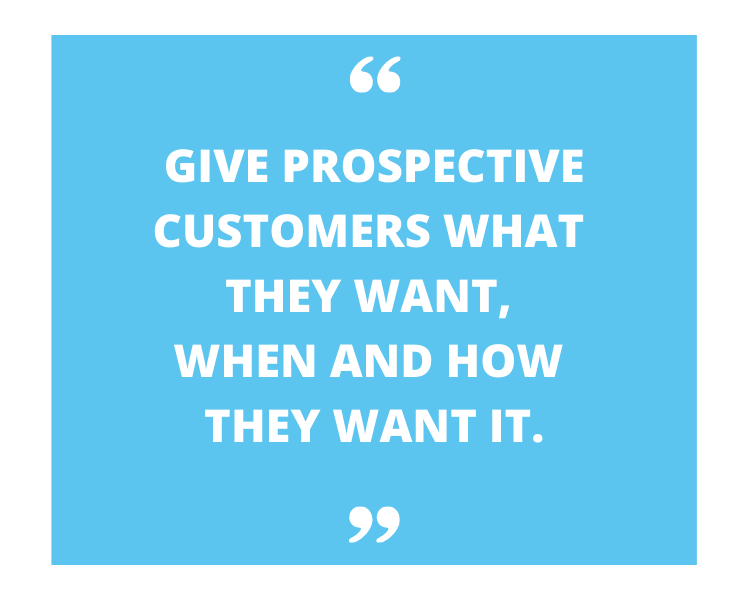
After determining who interacts with your company, it’s easier to create content tailored towards giving them the best possible experience online.
Give prospective customers what they want, when and how they want it.
But how do you find out the exact point where they began interacting with your company?
Start by analyzing the metrics for all of your owned properties and look at:
- Keywords people use to find your company’s site or landing pages
- Number of interactions with social media posts
- Tracking which online campaign channels had the greatest response
- Email open rates
- A/B testing metrics for landing pages or emails
- Total number of form captures for downloadable content
- Podcast download statistics and subscribes
It also doesn’t hurt to reach out to your sales team. In fact, you should! They’re an invaluable resource to learn more about your prospects buying journey and how they continue to interact with the brand.
The top-performing salespeople report they receive better leads from marketing. When you have the information you need to create the right marketing materials, it’s easier for them to close the sale. It’s a win-win.
Since the buying journey is not linear, your outreach needs to meet prospective customers where they are. Give them materials that provide value no matter where they are in their buying journey.
Check Out What Your Digital Ecosystem Looks Like
Now that you understand more about your customer let’s take a step back and look at what you’re doing online. It’s an opportunity to make sure your digital strategy is filled with only the things you need to get to the final destination and build customer loyalty.
Here are a few questions to help you see where your company exists online and what it’s doing to reach your audience. Along the way, this audit will also uncover which campaigns provide the most ROI.
What kind of content are you putting out there?
Maybe you’re doing a combination of blog posts, social media on a few platforms, and occasionally a few paid ad campaigns. Pop open Excel (or whichever data software/app you prefer) and document all of it.
What is the frequency of the content?
Assess how often—or not—each type of content is posted, uploaded, or updated for each of the company’s channels. You may discover that it makes more sense to adjust the amount of content posted within a certain time period.
What was the most popular content?
Knowing which pieces of content received the most downloads or generated a ton of traffic is a good indicator of where to place your resources. Tools like Google Analytics, Hootsuite, and Salesforce, among others, offer an in-depth look into how well your content is resonating with people.
What content channels do you own?
Most of your digital tactics will consist of owned content. This includes the company website, social profiles, blogs, and downloadable content like case studies and white papers.
Identify earned media channels
For earned or paid content, you’re relying more on third-parties to drive leads to the business. Strategic partnerships using distributed content, such as a podcast or guest appearances, count as an earned media—anything you don’t own directly or haven’t paid for fall into this category.
Make note of any paid media channels
Listing out which platforms your company is paying to be seen on reveals where it makes sense to keep spending money. Some of the most common online advertising platforms include:
- Google Ads
- Facebook Ads
- Twitter Ads
- Instagram for Business
- Native Advertising/Sponsored Content
After laying everything out and getting clarity on what’s happening online, you’ll be able to identify any significant gaps.
Common Digital Ecosystem Issues
As the full picture of your digital presence unfolds, you might see some places where it makes sense to address any shortcomings.
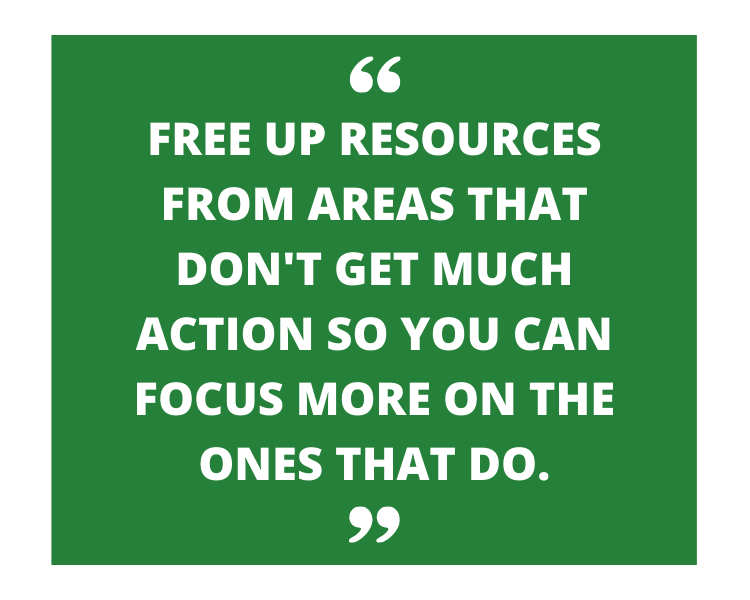
Here are some of the most common content issues I’ve seen:
Not answering people’s questions
Look at the search terms people are using to visit the site and monitor your company’s social chatter. Are there certain questions you could better answer based on those terms and what people are saying? Addressing people’s concerns and problems help keep them on your site and make it easier to keep them as a customer.
Poor (or non-existent) SEO optimization
With so much competition for page one of the search results, content must be fully—and correctly—optimized. Pay attention to your content and technical SEO. Both are vital for being found online.
Focusing on too many channels at once
Not every business needs to be on every single social platform or create every piece of content in existence. Are there certain channels you can cull? Free up resources from areas that don’t get much action so you can focus more on the ones that do.
Your digital strategy bag is almost packed. Now it’s time to pull all of this information together.
Create an Evolving Content Strategy
After looking at everything you’ve packed, you’re almost ready to get going. But there’s one last thing to take care of.
No good digital strategy is complete without creating a comprehensive content plan.
First, you’ll create an editorial calendar with all of the campaigns you plan to launch and the individual pieces of content to go along with them. If paid and earned media is part of the plan, these also get thrown into the mix.
This content won’t come from the ether, though. It’s based on actual data and stats. Every blog post written, social update posted, and video uploaded needs to provide solution or answer a customer’s question.
That being said, you shouldn’t be afraid to experiment. Maybe you’ll uncover a new opportunity to reach a segment of your audience that your company hadn’t considered before.
So be daring. Be adventurous. We’re only in the infancy of online content creation, and the needs of your customer are constantly evolving. Your content strategy won’t be set in stone. You’ll continue to tweak and adjust it to meet your audience’s needs.
Companies that Made it to Their Destination with Great Digital Marketing Strategies
Whether they’re producing their own cooking shows online or using paid social media as a lead generation tool, here are five companies in the food industry that created and implemented a strong digital strategy.
Just Egg
With a heavy focus on reducing their—and our—carbon footprint, Just Egg’s site is filled with stories of how we can all do our part to make the world a better place through the food we eat.
Site visitors can even find a downloadable environmental impact report detailing how their products compare with other non-plant-based ones.
They also have an energetic Instagram presence, which is only enhanced with their cooking show, eatjust at Home, where they share recipes using Just Egg products.
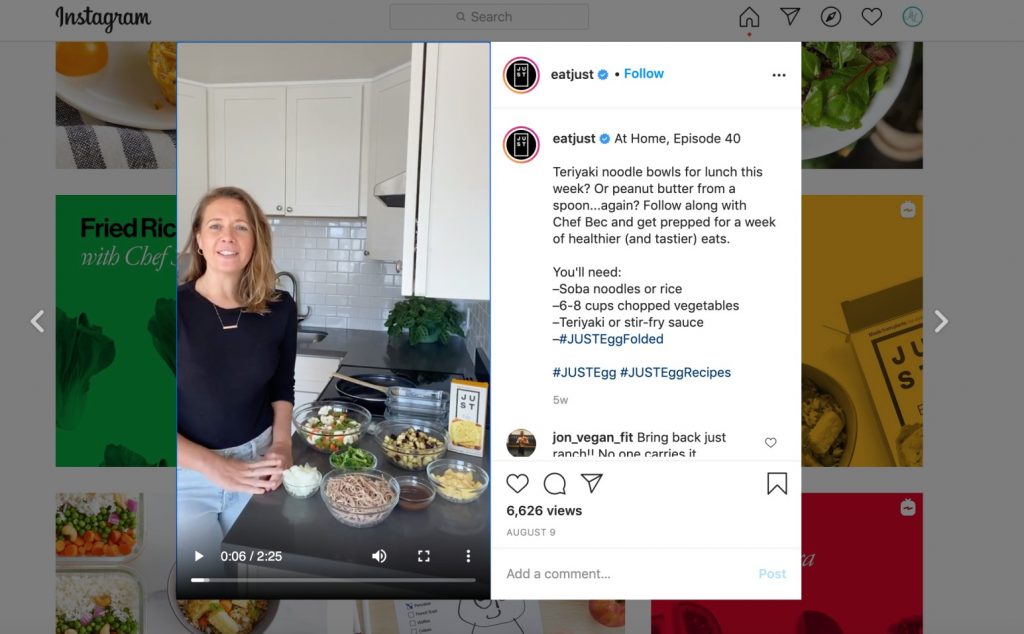
Lavva
As one of the most innovative dairy-free yogurt and milk brands out there, Lavva has a dedicated base of superfans who love their products. Their Instagram page is full of beautiful lifestyle imagery, recipes, and lively conversation.
But they don’t stop there. On their website, they provide people with a ton of information about the yogurt’s main ingredient, the pili nut.
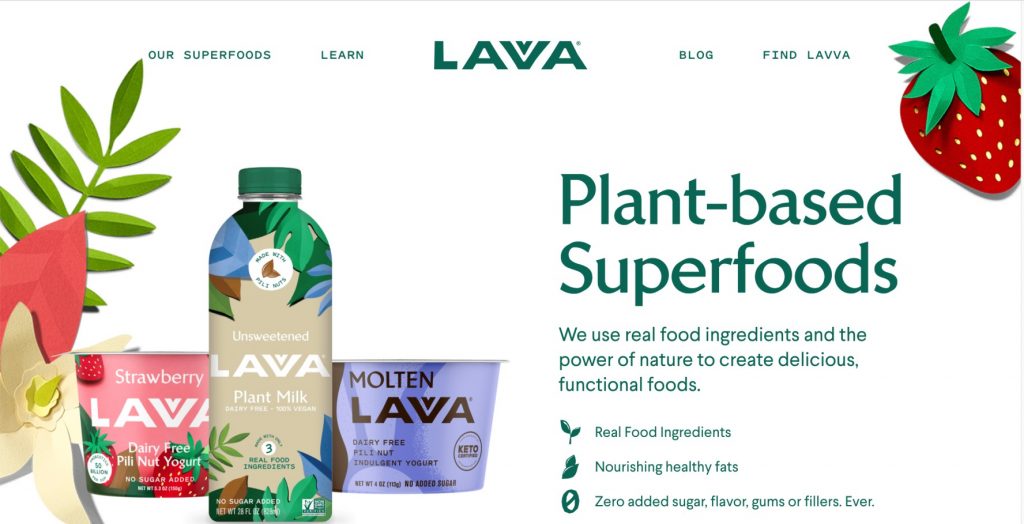
JustFood ERP
JustFood ERP helps food manufacturers streamline their production process and create products more efficiently. Their website features numerous resources, such as case studies and webinars, to help B2B buyers make a decision.
JustFood also uses LinkedIn as an outlet to reach new customers through paid, sponsored ads. These ads provide downloadable content such as white papers to potential customers.
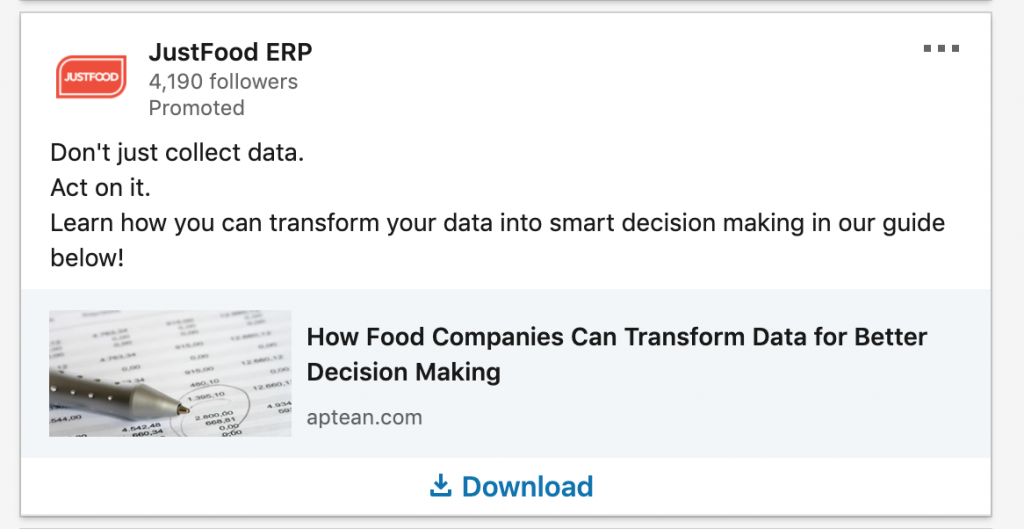
Corbion
Not to leave out the biotech companies, Corbion works with various industries ranging from chemicals to biomedical and bioplastic materials. They also have a food ingredients arm in their portfolio.
Much like JustFood, they utilize paid advertising on LinkedIn by promoting their podcast and giving prospects access to their virtual portal, housing a wealth of information about their services.
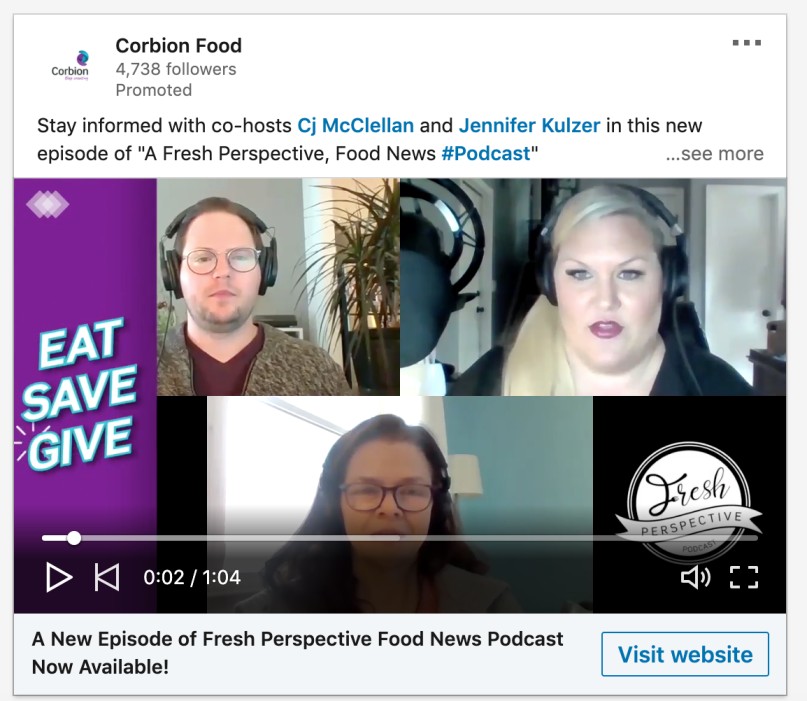
Partake Foods
There’s something to say about what happens when you combine a life-changing problem, in this case, food allergies, with an unstoppable force.
Mix the two, and you get Partake Foods, the brainchild of founder Denise Woodard. She set out to provide safe, healthy, nutritious snacks not only for her own child but for others with life-threatening food allergies.
Partake’s marketing content centers around a delectable Instagram page along with plenty of earned street cred from several PR initiatives. From on-air-interviews to magazine features and web videos, Partake is an example of how earned media, when done right, plays a huge role in a company’s digital strategy.
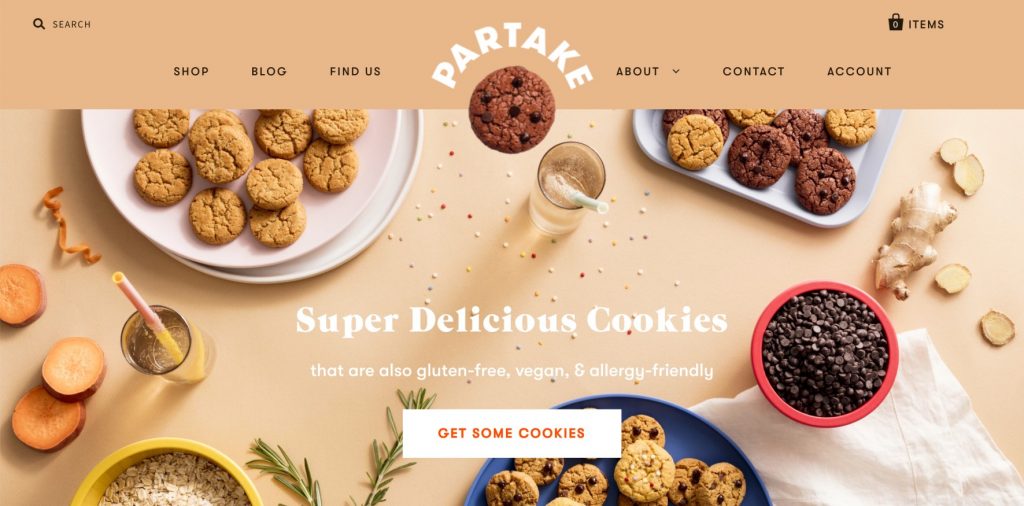
Enjoy Your Trip
As you set off on your journey, you can see why it pays to have everything you need to ensure the ride to your destination is a smooth one. With a good digital strategy in place, you’ll be able to talk to your audience from a place of authenticity that feels like your company truly understands them.
Now go and enjoy some sunshine.
Need help with your food or ingredient brand’s digital content strategy?
You’re in the right place. Let’s talk about your next campaign.



